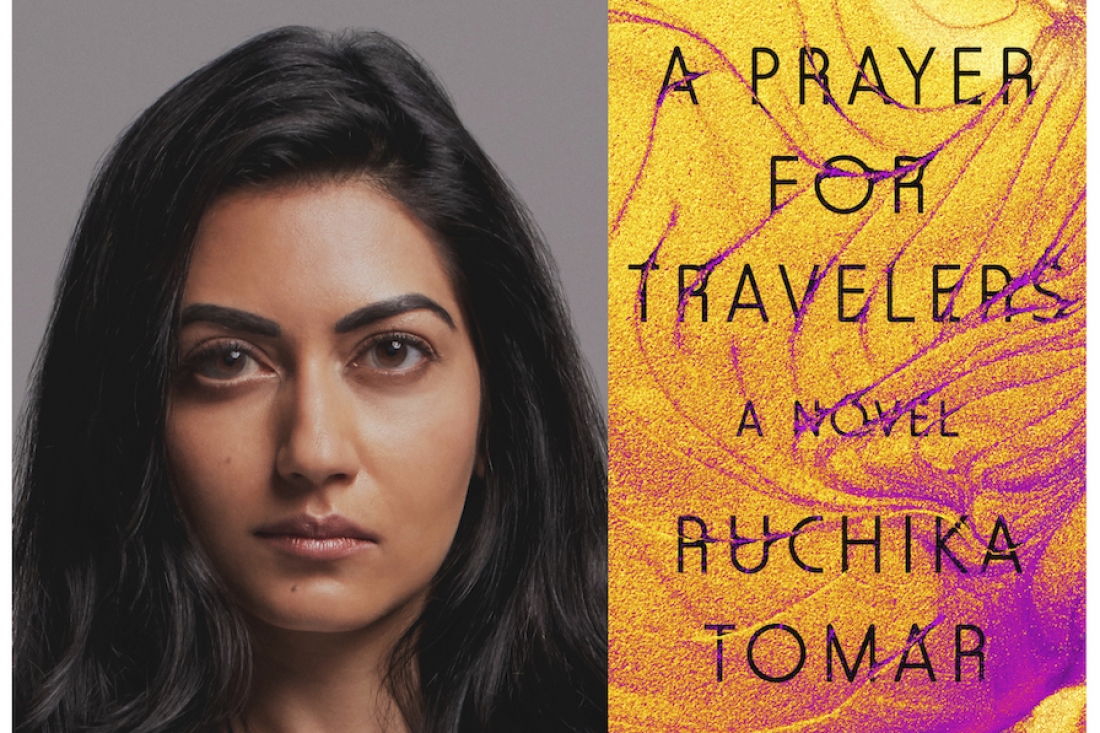
Picture Credit: Dan Doperalski

Picture Credit: Dan Doperalski
One of the most anticipated debut novels of the year, Ruchika Tomar’s A Prayer for Travelers propels readers into the world of Penny and Cale, two marginalised young women who forge an intense bond against a constricting backdrop of violence and isolation in Nevada's northern desert. When Penny befriends Cale — a bookish loner of mysterious parentage, was abandoned by her mother and raised by her grandfather in a loving, if codependent, household — she exposes her to the complicated reality that exists beyond their small town, and the girls become inseparable until one terrifying act of violence shatters their world. When Penny vanishes without a trace, Cale must set off on a dangerous quest across the desert to find her friend, and discover herself. A resounding tale of female friendship and the tragic violence that accompanies the American West, told in short, interconnecting chapters, A Prayer for Travelers is a terrifyingly important book.
We connected with the author and delved further into the book that is a finalist for the Pen/Hemingway Award for Debut Novel.. Excerpts follow:
What led you to pursue writing?
I read a great deal as a child. I needed to escape into novels from a very early age. I remember the first time I realized what writing was. I was reading a paperback at seven or eight years old when I realized the plot was somewhat similar to other books I had read by the same author. It was the first time I stopped to consider the author as a concept. The idea that this was somebody’s job—in this case, a woman’s—to make up stories with her imagination, was just so compelling to me. It was a very powerful feeling for a little girl with no agency. I wondered if I could write stories, too, and began to try right away.
Which authors or books were your early formative influences?
Well, as a small child I read all the usual suspects—Nancy Drew, Hardy Boys, the Boxcar Children, the Babysitters Club—I loved a series. I enjoyed getting to know characters over time and revisiting them in different scenarios again and again, like real friends. I think that foundational investment in character must have stayed with me because it remains central to my writing, perhaps over other elements of fiction.
What inspired the writing of A Prayer For Travelers?
I’m always thinking about origins. I grew up in a landscape that was psychically similar to Pomoc in the American West. I saw how violence, isolation, race and class influenced the construction of identity, and I continue to be impressed by its resilient hold over our lives, even as we evolve. As an adult I often find myself operating in professional settings among peers of privilege who attended private school, elite colleges, and/or grew up amid old money—I can’t help but notice how these formative foundations of security—or lack thereof—influence how we react to conflict and opportunity.
The book begins with the 31st chapter and moves further as a non-linear narrative which somehow never feels forced and makes perfect sense. What was your writing process like behind this book and why did you decide to use this non-linear narrative technique?
In this case, character influenced form. This story is written in first-person POV from Cale’s perspective, so the story had to be true to who she is and how she would tell this story. Our sense of the world is informed by our experiences, and Cale’s experience is fracturing. This novel often gets described as a coming-of-age story, but I’d prefer if it was described, more specifically, as a coming-into-womanhood story. The structure of Prayer is oratory and elliptical in a way that honors the way women tell stories—especially stories of trauma, which can be difficult, if not impossible, to revisit in their entirety.
At one point your protagonist Cale says that ‘If this desert was a mother, she was the type to eat her young.’ What is the significance of the topology of the desert in relation to your narrative?
I’ve always been interested in the combination of freedom and oppression that isolation offers, and how those conditions effect young women within patriarchal cultures.
There are many themes explored in your work but what for you was the main propelling force behind the writing of this book?
I wanted to write about the West, about women, and the friendships we form in adolescence. It’s such an interesting phenomena, how we can form these lifelong bonds with people before we even know who we’re going to become. It speaks to the concept of an essential self that can’t be altered by the trappings of adulthood—money, career, marriage, etc.
How did you find the characters of Cale and Penny and build them further?
In typical Penny fashion, she arrived fabulous and fully-formed from day one. It took me longer to nail Cale’s voice. She had a lot of self-protective walls set up from the start. Yet once I got to know her I could hear her, and the narrative fell into place.
What was the biggest challenge that you came across while writing your debut book?
The biggest challenge for me has always been finding the time and resources to write around full-time employment. PFT was constructed over the course of ten years on nights and weekends, and therefore ended up taking much longer than I would have liked it to.
Lastly, what is next for you?
I teach creative writing at the collegiate level. I’m also working on a new novel (I hope). Time will tell.
Text Nidhi Verma